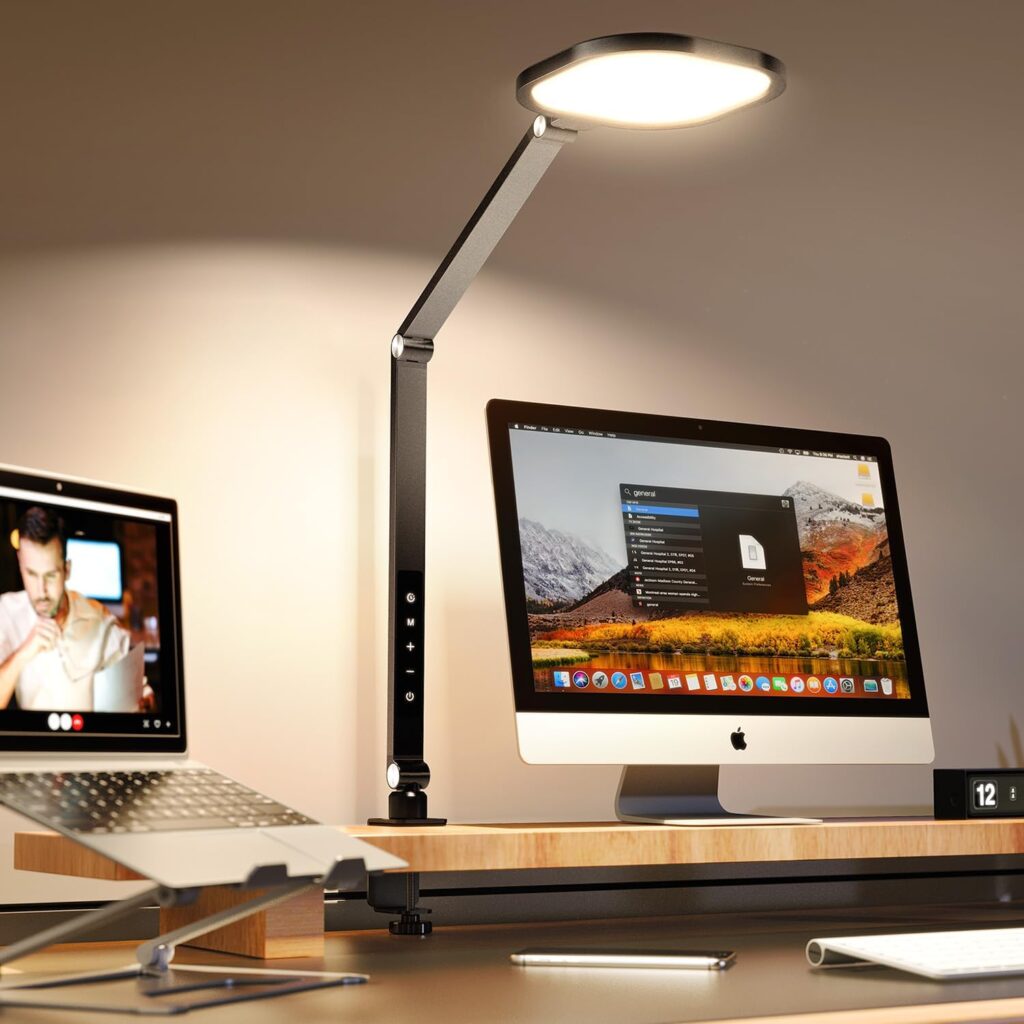Working from home has become a lifestyle for many — but sitting for hours at a regular desk or on a dining chair can quickly take a toll on your body.
The right ergonomic furniture can transform your workspace into a healthy, productive, and stylish environment.
From posture-supporting chairs to adjustable desks, these 14 ergonomic home office furniture ideas will help you design a setup that supports both comfort and focus.
1. Adjustable Standing Desk
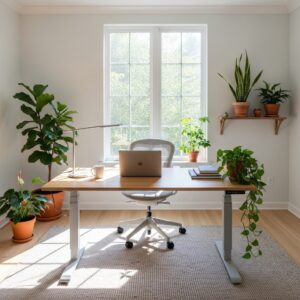
An adjustable standing desk allows you to switch between sitting and standing throughout the day — reducing back pain and improving energy levels.
Look for desks with smooth electric lifts and programmable height settings.
Bonus tip: Pair it with an anti-fatigue mat to reduce strain on your legs when standing.
2. Ergonomic Office Chair
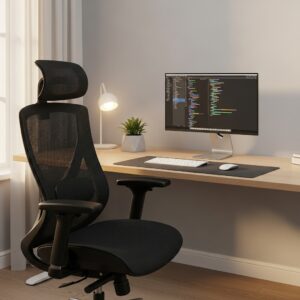
A high-quality ergonomic chair is a must.
Choose one with lumbar support, adjustable height, armrests, and breathable mesh.
The right chair keeps your spine aligned and reduces shoulder and neck tension.
Great pick: Herman Miller Aeron or Secretlab NeueChair.
3. Sit-Stand Stool
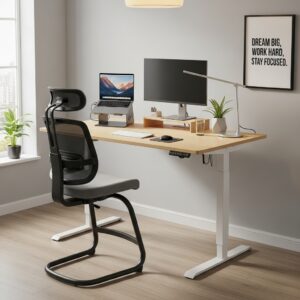
If you use a standing desk, a sit-stand stool offers balance and gentle movement while maintaining posture.
It keeps your core engaged and prevents fatigue during long sessions.
Eco-friendly note: Many brands now use recycled materials for seat bases.
4. Keyboard Tray with Adjustable Tilt
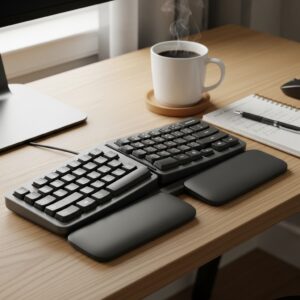
Typing at the wrong angle can strain your wrists.
An ergonomic keyboard tray lets you adjust height and tilt, so your hands and forearms stay in a neutral, comfortable position.
Tip: Look for one with a built-in wrist rest for extra comfort.
5. Monitor Arm Mount
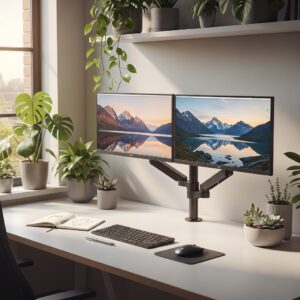
Position your monitor at eye level using an adjustable arm mount.
This prevents neck strain and promotes proper posture.
You can easily move, tilt, or rotate your screen for multitasking.
Bonus: It also frees up valuable desk space for a cleaner workspace.
6. Footrest for Proper Posture
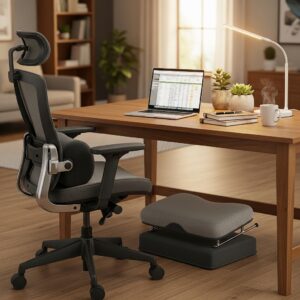
An ergonomic footrest encourages proper blood circulation and helps maintain a healthy sitting posture.
Choose one with adjustable height or rocking motion to keep your legs active.
Comfort tip: A textured surface provides a gentle foot massage during work hours.
7. Curved Corner Desk
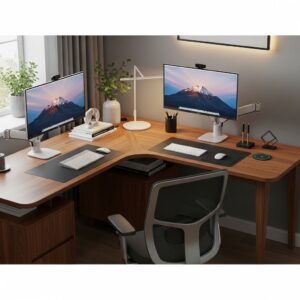
Corner desks with a curved front allow for a more natural reach to your workspace.
They also help maximize space and keep everything within arm’s length without awkward stretching.
Style note: Go for bamboo or recycled wood finishes for an eco-chic look.
8. Laptop Stand or Riser
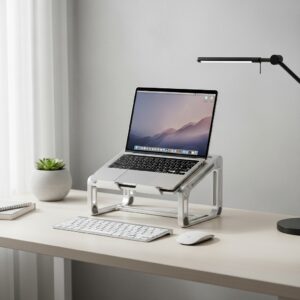
Using your laptop flat on the desk can lead to neck strain.
A height-adjustable stand brings your screen to eye level — perfect when paired with an external keyboard and mouse.
Portability perk: Lightweight aluminum models are easy to move between rooms.
9. Ergonomic Mouse and Keyboard Set
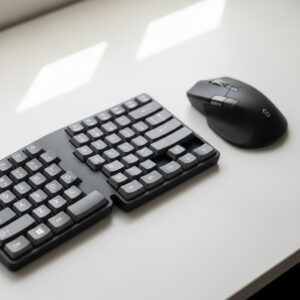
Curved, split keyboards and contoured mice support your hand’s natural shape, reducing wrist pressure and repetitive strain injuries.
Smart option: Wireless ergonomic sets keep your workspace clutter-free.
10. Desk Converter
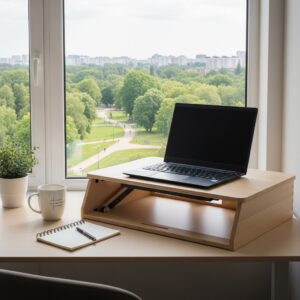
If you’re not ready to buy a full standing desk, a desk converter is a great alternative.
It sits on top of your existing desk and lets you raise your monitor and keyboard in seconds.
Space-saver: Ideal for apartments or small office nooks.
Also Check: 23 Work from home office
11. Adjustable Task Lighting
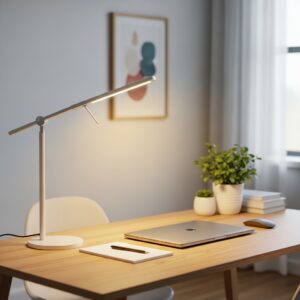
Eye strain is often overlooked in ergonomics.
A flexible LED task lamp with adjustable brightness and color temperature helps reduce fatigue, especially during long work hours.
Pro tip: Choose a lamp with motion sensors or touch dimming for added convenience.
12. Under-Desk Treadmill or Cycle
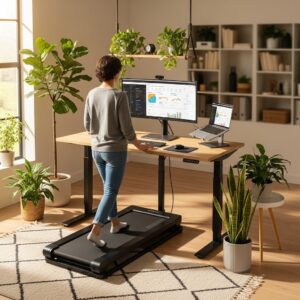
If you want to stay active, consider a compact treadmill or pedal exerciser that fits under your desk.
These promote movement and improve focus during meetings or calls.
Health bonus: Great for improving circulation and breaking sedentary habits.
13. Cable Management System
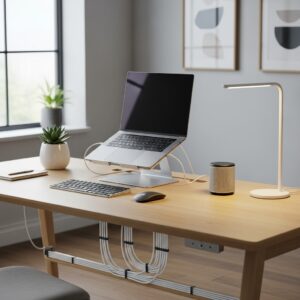
Cluttered cables can cause stress and make cleaning difficult.
Use under-desk trays, cable sleeves, and clips to keep wires neat and out of sight.
Design idea: Combine cable organizers with bamboo panels for a sleek, natural look.
14. Ergonomic Desk Accessories

Small details make a big difference — like a monitor light bar, wrist cushions, or a posture-correcting seat cushion.
These accessories enhance comfort and keep your setup user-friendly.
Personal touch: Choose accessories in calming tones like gray, sage, or soft blue to boost focus and relaxation.
🌿 Design Tips for an Ergonomic Home Office
Prioritize natural light: Position your desk near a window to reduce eye strain.
Declutter regularly: A clean space improves mental clarity and focus.
Add greenery: Plants improve air quality and create a calm work atmosphere.
Move often: Even with ergonomic furniture, regular movement keeps your body balanced.
Creating an ergonomic home office doesn’t have to mean sacrificing style.
With the right furniture and thoughtful setup, you can design a workspace that’s both comfortable and beautiful — one that supports your health and boosts productivity all day long.
